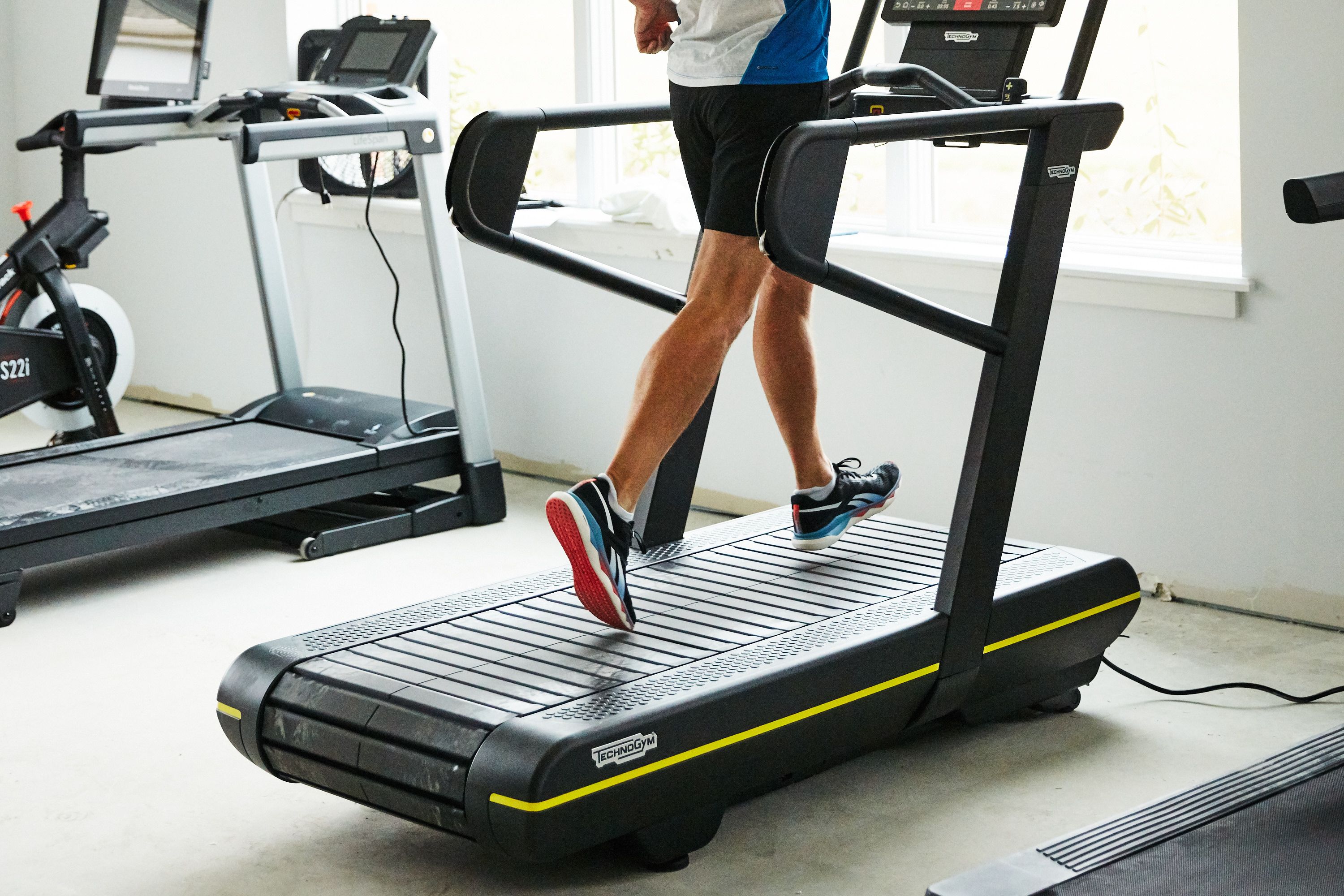How to Actually Enjoy Treadmill Running This Winter

Running is invigorating: feeling the wind moving through your hair, your body connecting with the earth beneath your feet, a chance to take stock of the world that moves around you and the world that moves within you. Unless, of course, the weather sucks. Then it’s time to book it indoors and hit everyone’s “favorite” cardio machine, the treadmill.
If you’re worried about transitioning your outdoor runs to the treadmill this winter, you’re not alone. In addition to basic safety concerns, you might be worried that you’re not getting all the same physical benefits as pounding the pavement on a physical track. Plus, what’s the deal with that calorie counter on the machine? Here’s what to know about running on the treadmill.
How different are treadmill runs, really?
When it comes to how much work you put into your run, the treadmill is not “cheating” (no, the belt moving doesn’t do the work for you). You’ll get all the same physical benefits as your outdoors runs, excluding the mental perks of spending time outdoors. Likewise, if you can walk or run outdoors, the treadmill isn’t going to give you a different type of workout.
Ignore that calorie counter
As mentioned above, indoor and outdoor runs are not going to be drastically different, despite what the differing data from your treadmill’s built-in calorie counter and your smartwatch might be suggesting. Lifehacker Senior Health Editor Beth Skwarecki explains it like this:
Unless a scientist is following you around with a computer and an oxygen mask all day, you’re only getting a very rough estimate of what that number might be. Gym machines typically overestimate your calorie burn because, hey, big numbers make customers happy. So if you get different numbers from your elliptical and your Fitbit, go with the lower number. But the actual winning move might be to not count activity calories at all.
It can certainly be helpful to have metrics like time, distance, speed, and incline right at your fingertips, but consider turning off or taping over the calorie count.
Learn machine safety
While the benefits of treadmill runs are the same as outdoor runs, the risks are different. During outdoor runs you need to have your wits about you to avoid traffic, unsteady surfaces, and all the threats posed by the outside world.
On the treadmill, your main safety concern is getting on and off. Never mess around by jumping straight on or off a fast-moving belt. Always slow it down gradually, almost to a stop, before disembarking. In case of emergency, know where to locate your machine’s safety clip, which you can yank out to make the machine stop moving as quickly as possible.
Every machine works a little differently, so if you’re at the gym, ask a trainer to walk you (ahem) through the treadmill you’re on. Learn where the fan is, secure a water bottle close by, and see if it’s possible to turn off that calorie count.
Then, take advantage of all the different functions your treadmill has to offer, primarily the ability to control speed and incline. You probably want to set an incline for a more outdoor-like workout, where you rarely encounter consistently, perfectly flat routes.
To handrail or not to handrail?
The purpose of your treadmill run is to mimic natural walking and running strides as best you can. Holding onto the handrail can throw that off. “Using the handrails transfers the workload meant for your legs and core into your upper body,” certified personal trainer Amanda Foland told Livestrong. If you feel the need to hold onto the handrails, it’s not the end of the world. But if it makes your workout significantly easier, think about what that likely means for the amount of work you’re putting into–and getting out of–your run.
Focus on form
With none of the distractions of the outside world, treadmill runs offer a unique opportunity to focus on proper form. All the tenants of proper running form apply, but can be easy to forget on the treadmill. Take this time to brush up on good form with these reminders:
Engage your core
Use a relaxed arm swing
Keeping your gaze forward (don’t look down at your feet)
Keep your feet under your body (rather than overstriding)
When it comes to form issues specific to the treadmill, Healthline points out that the length of the belt might tempt you to shorten your stride to avoid kicking the front of the machine. Allow yourself to run a little further back on the belt in order to keep your stride as natural as possible. And as mentioned above, try to avoid holding onto the handrails unless you’re concerned about your balance.
Mental tips and tricks to sustain you through your workout
My greatest fear with the treadmill is not that I will trip and fall and then get my ponytail sucked up into the machine, but that I will get bored. Here are some ways to keep your mind occupied when your surroundings are unchanging during your indoor run:
Watch a movie or TV show
Read (easier to do for walkers than runners, but don’t sleep on audiobooks)
Build in speed and intensity changes
Visualize your normal outdoor route
At home, play music or a podcast from a speaker rather than bothering with earphones
At the gym, get a friend to run at the machine next to you
For many people, the treadmill is somehow not a source of dread, but an incredible tool to manipulate the conditions into their perfect run every time.
The post How to Actually Enjoy Treadmill Running This Winter appeared first on life hacker
